The Johnson Company
Archive of Historical Photographs and Other Images
Part II - 1889-1929
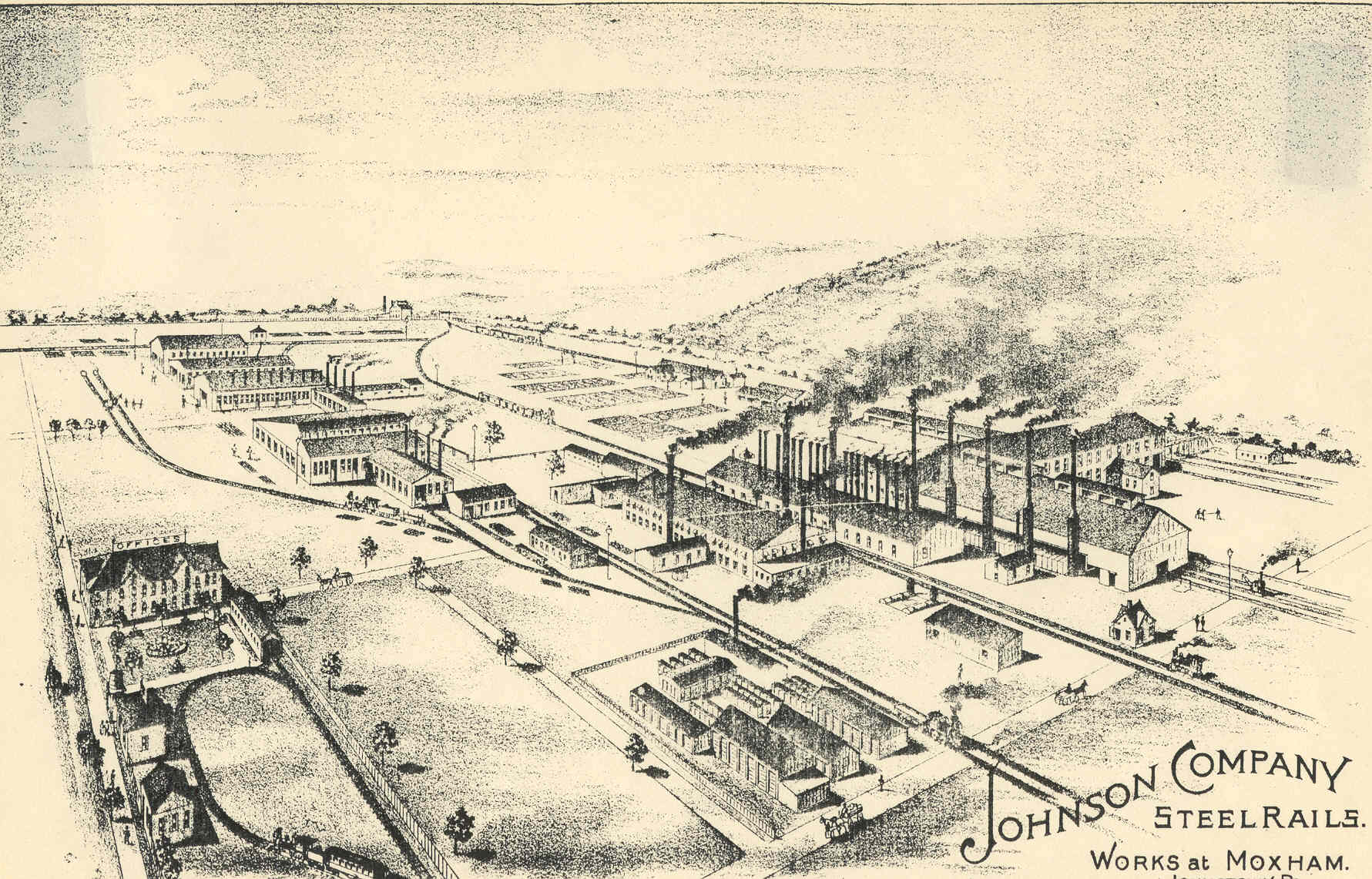
Johnson Company rail works, circa 1890 (Caldwell Atlas of
Cambria County 1890).
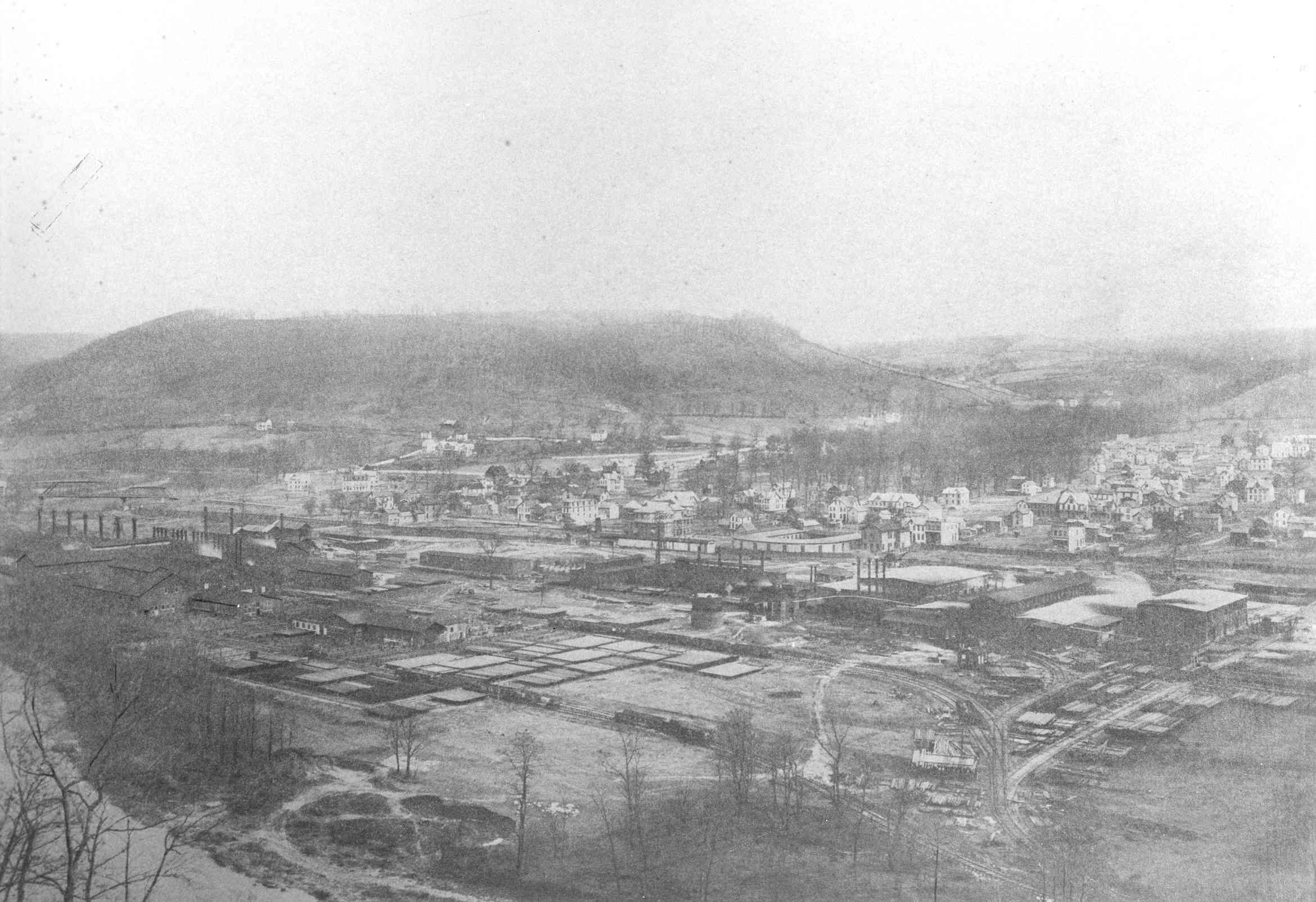
A view of the Johnson Company mill in spring 1891, looking west
from across the Stony Creek toward
the Town
of Moxham.
Visible on the left are the rail mill (closest to the river bank), steel
foundry, and
the original pattern
and blacksmith shops.
Behind in the upper left is the Moxham Bridge. In the center-right
are the
electrical department
and boiler house, and the
wooden buildings of the temporary switch works
constructed after the Great Flood
destroyed
the switch works in Woodvale.
Behind those (along Ventral Avenue)
are the newly built horse-shoe shaped wooden
car barns of the Johnstown Passenger
Railway Company. To the right
of the barns are the Engine House and the stables
of
the Moxham Fire Company. To the left of the barns is the narrow
car shed of the Johnstown and Stony Creek Railroad
and,
behind that, the General Office Building.
The large wooded area in the upper right is the Von Lunen Grove (JAHA).
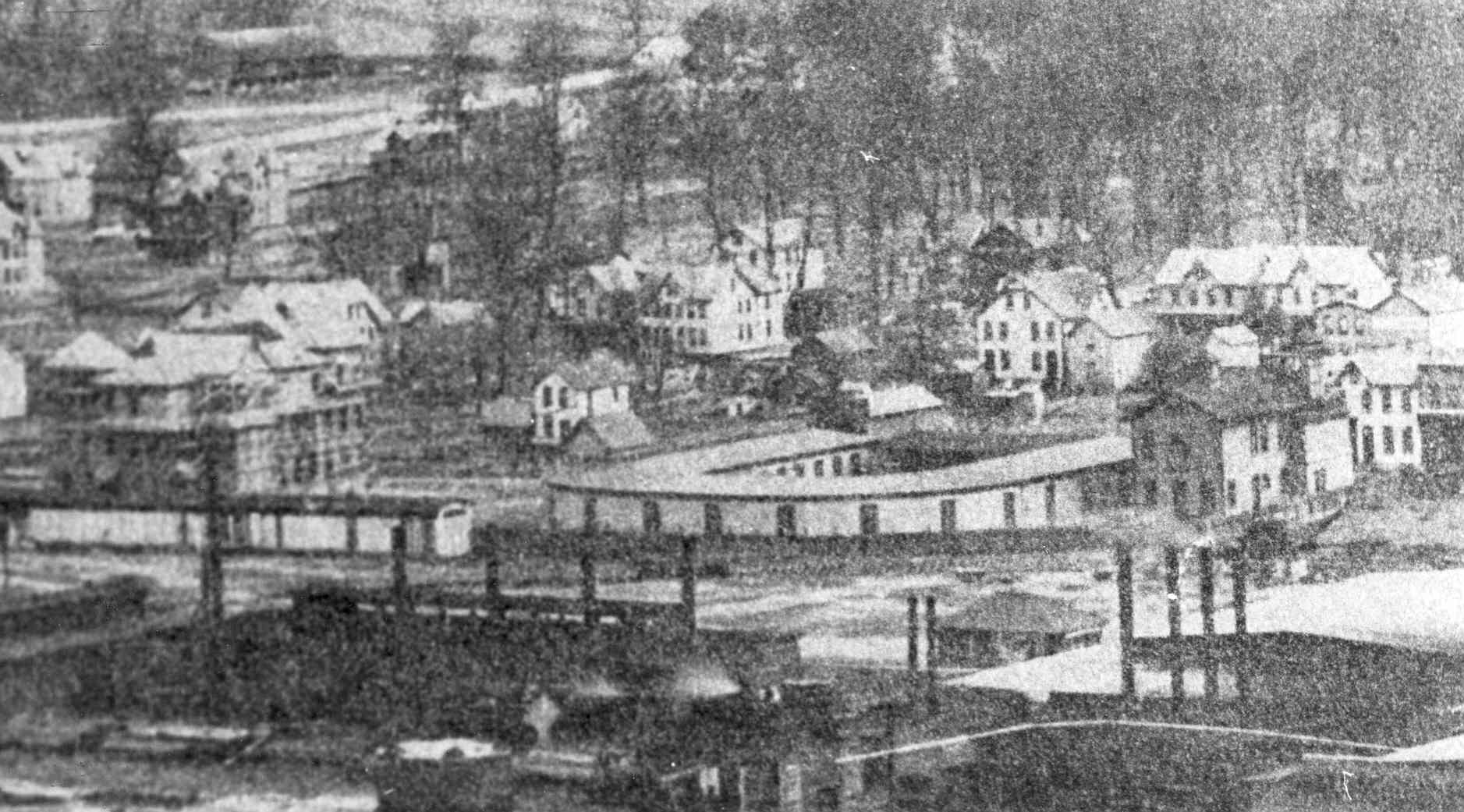
Detail of the spring 1891 mill view (above), showing the car
barns of the Johnstown Passenger
Railway
Company built in 1891 on the west side of central Avenue between the Johnson
Company's
General Office
Building (extreme left) and the Moxham Fire Engine Company building and stables
(extreme right). The small
building to the left of the horse-shoe shaped car barns is a dispatcher's
and
conductor's shed.
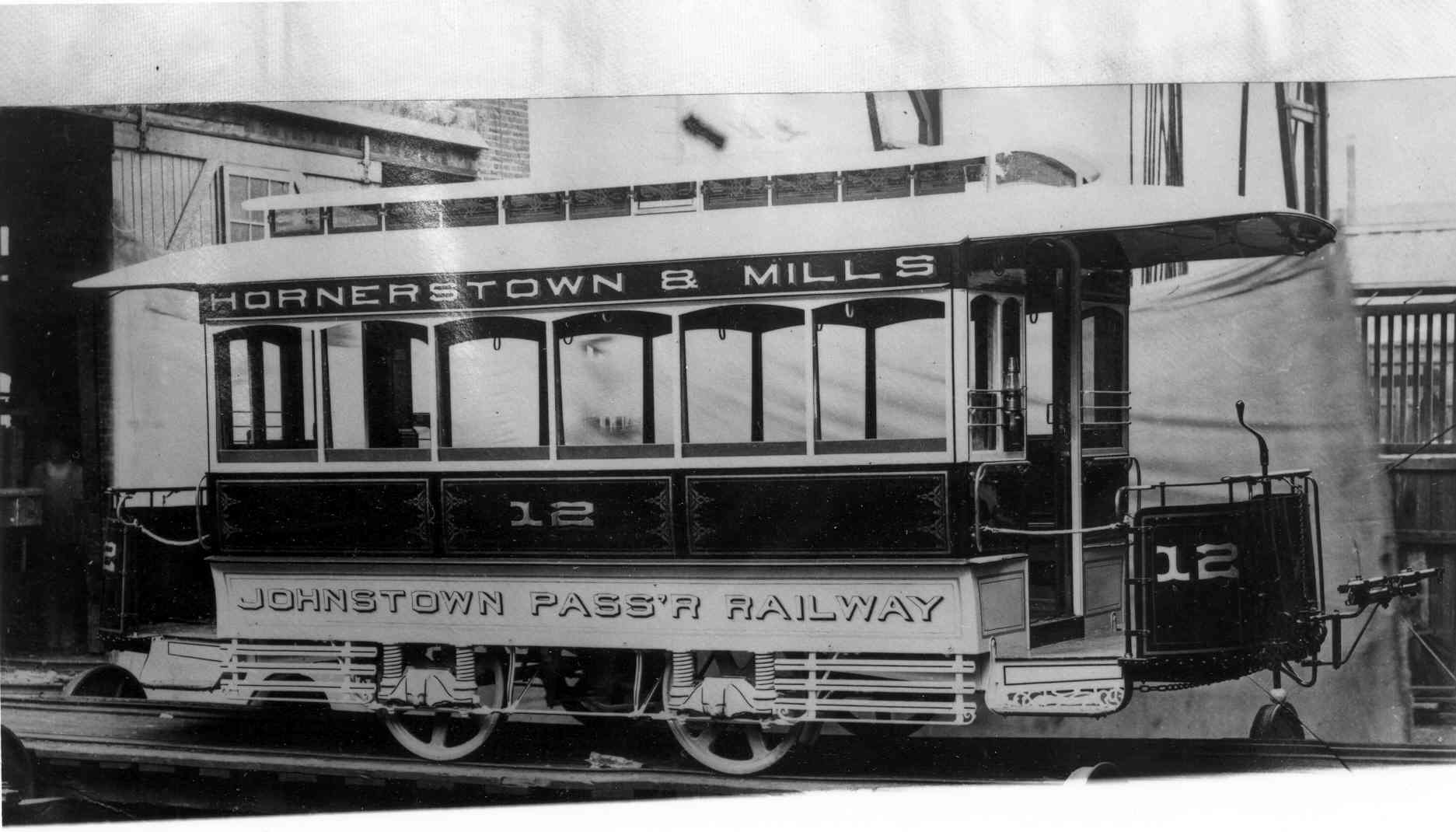
Production photograph of car no. 12 for the Johnstown
Passenger
Railway Company (Historical Society of Pennsylvania).
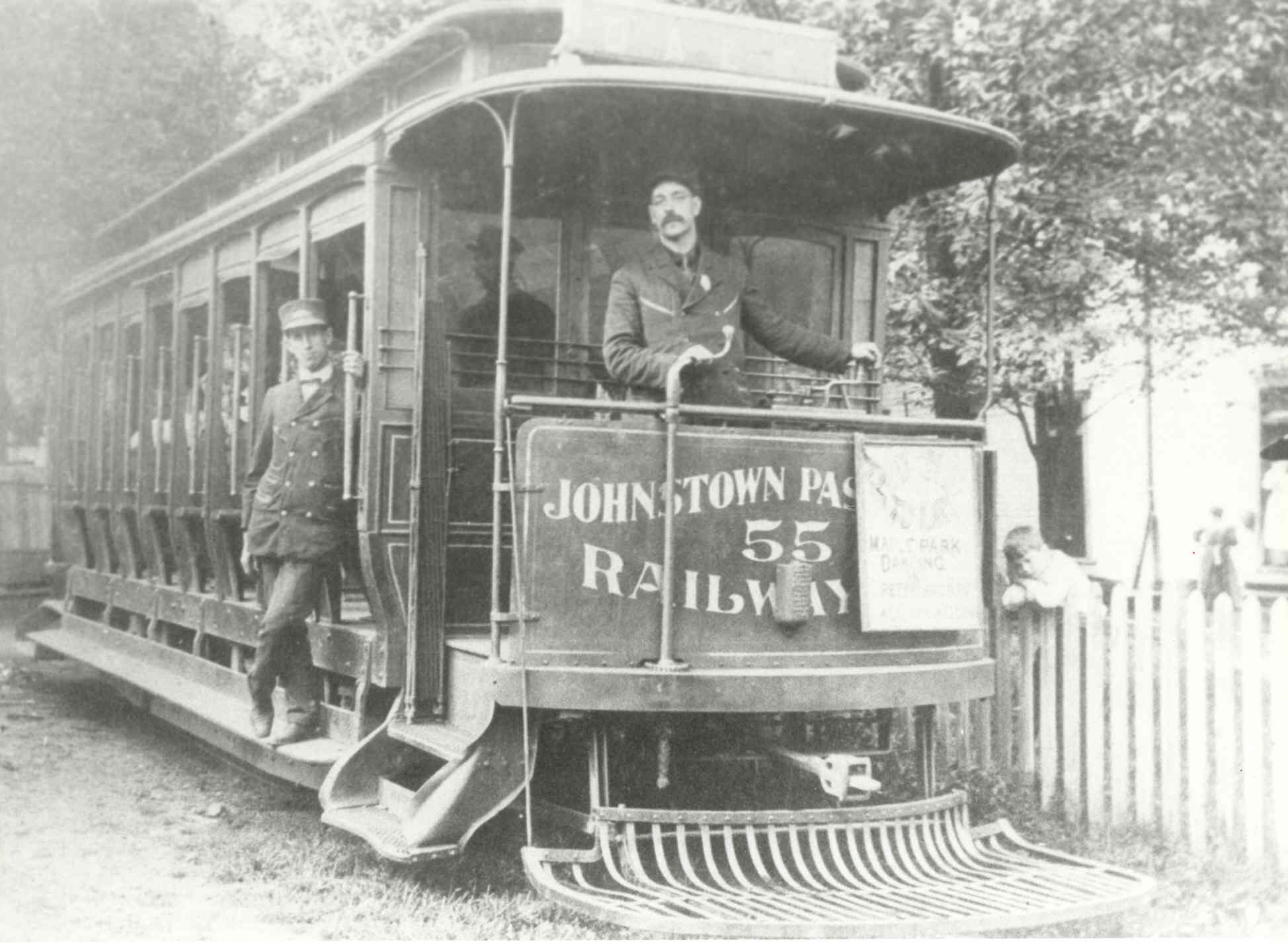
Open-sided car no. 55 of the electrified Johnstown Passenger
Railway Company (Irving London)
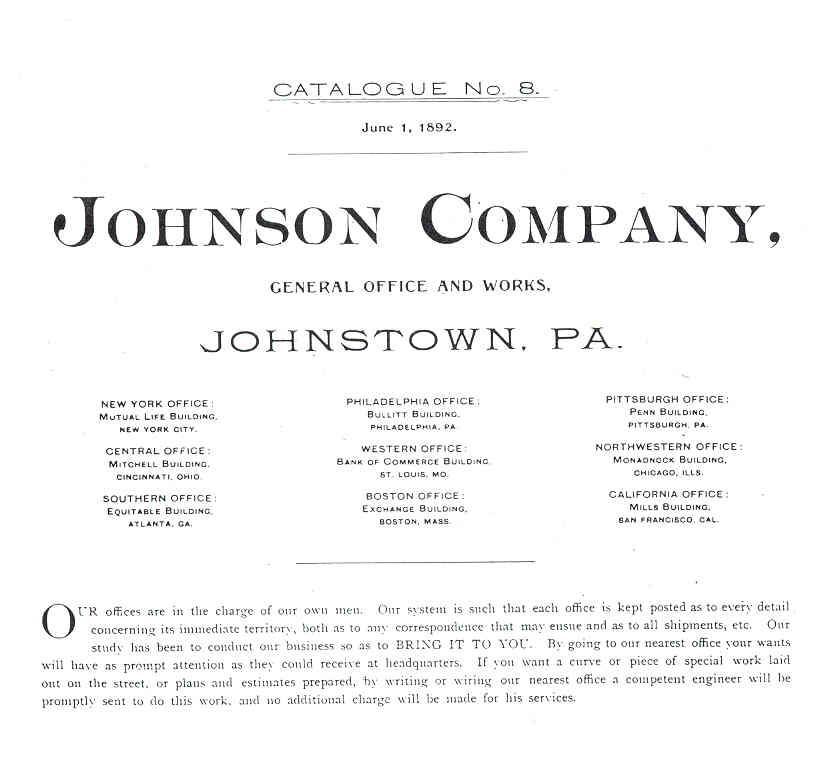
Johnson Company Catalogue No. 8 (1892) (JAHA).

Sectional plates from Catalogue No. 8 (1892).
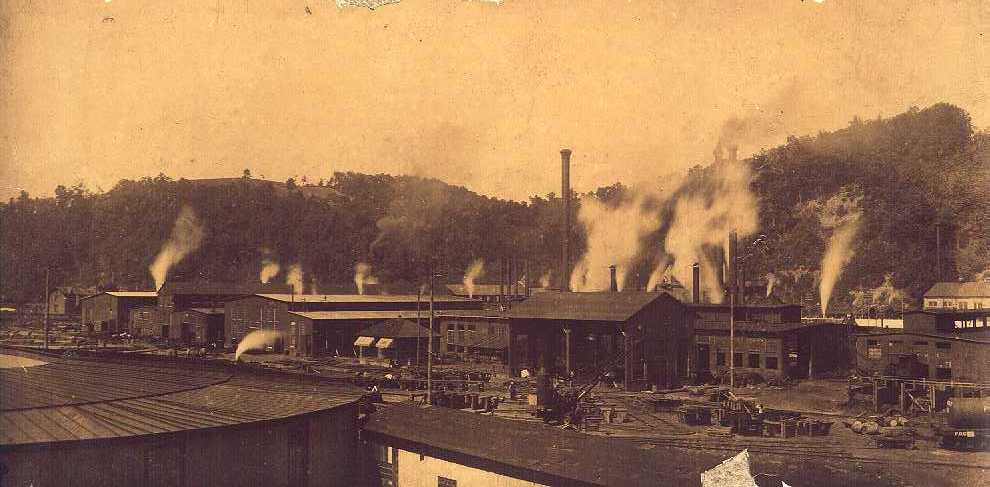
The switch works and lay out yard of the Johnson Company in 1892.
This photograph, probably
taken
from the
third floor of the General Office Building, shows (from left): the bending shop,
the two-bay
forge and switch shop,
the large blacksmith and pattern shop, the bolt and hammer
shop (behind the open
shed), and the shear shop.
In the background can be seen the chimneys of the
boiler house and (on the
far
right) the pump house on the
bank of the Stony Creek that brought water
through brick viaducts to cool
the
roll stands. In the foreground is
the curved roof of the Johnstown
Passenger Railway Company car barns
(on the
right) and the end of the car
shed of the Johnstown
and Stony Creek Railroad (center) (JAHA).
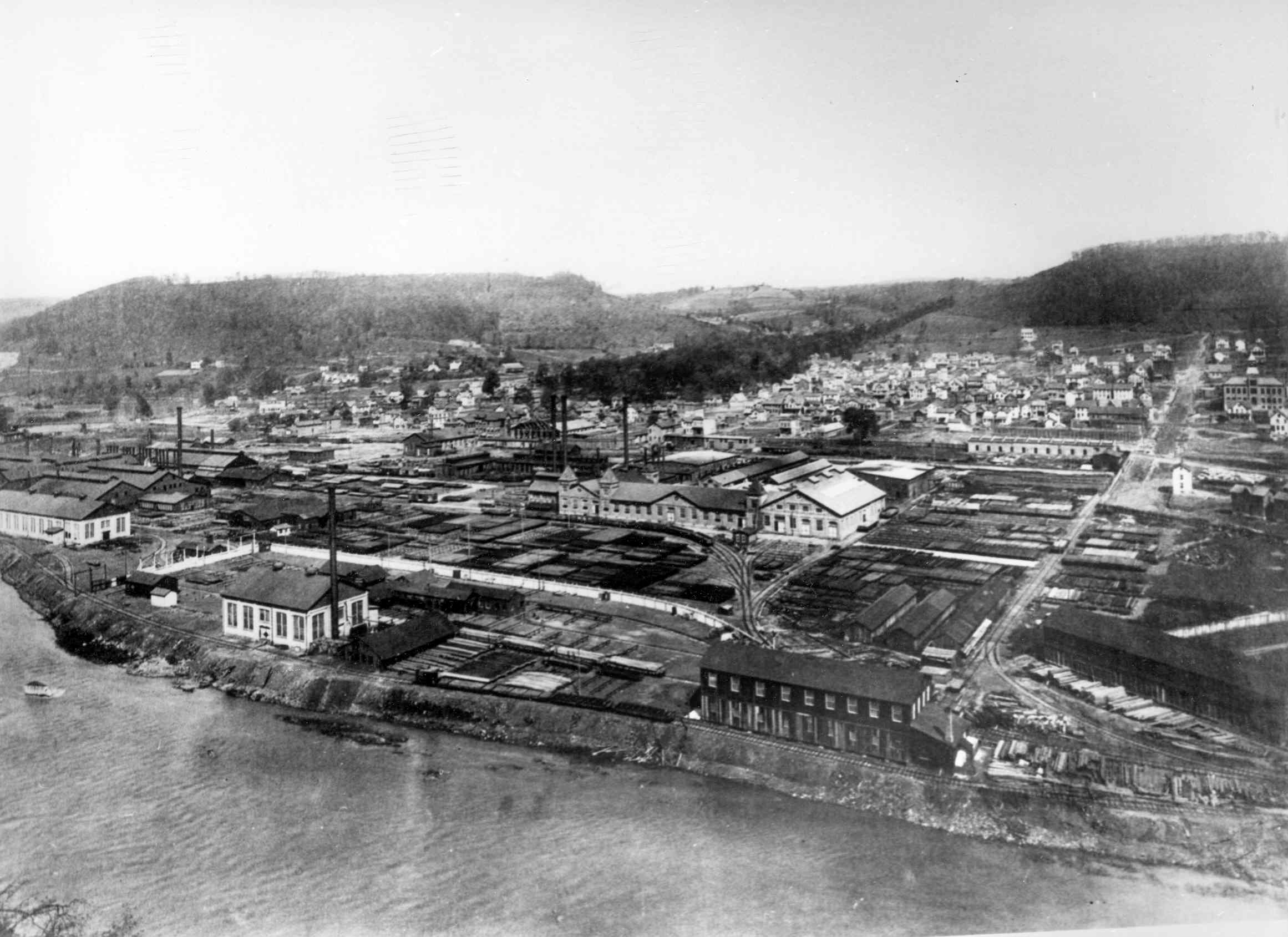
The Johnson Company, looking east across the Stony Creek toward
the Town of Moxham
(which had been incorporated into the City of Johnstown),
spring 1893 (JAHA).

The Johnson Company General Office complex, looking south along
Central Avenue, circa 1896.
In the forefront are the laboratory building (left) and the machine shop
(right), and the track of the
Johnstown and Stony Creek Railroad (JAHA).
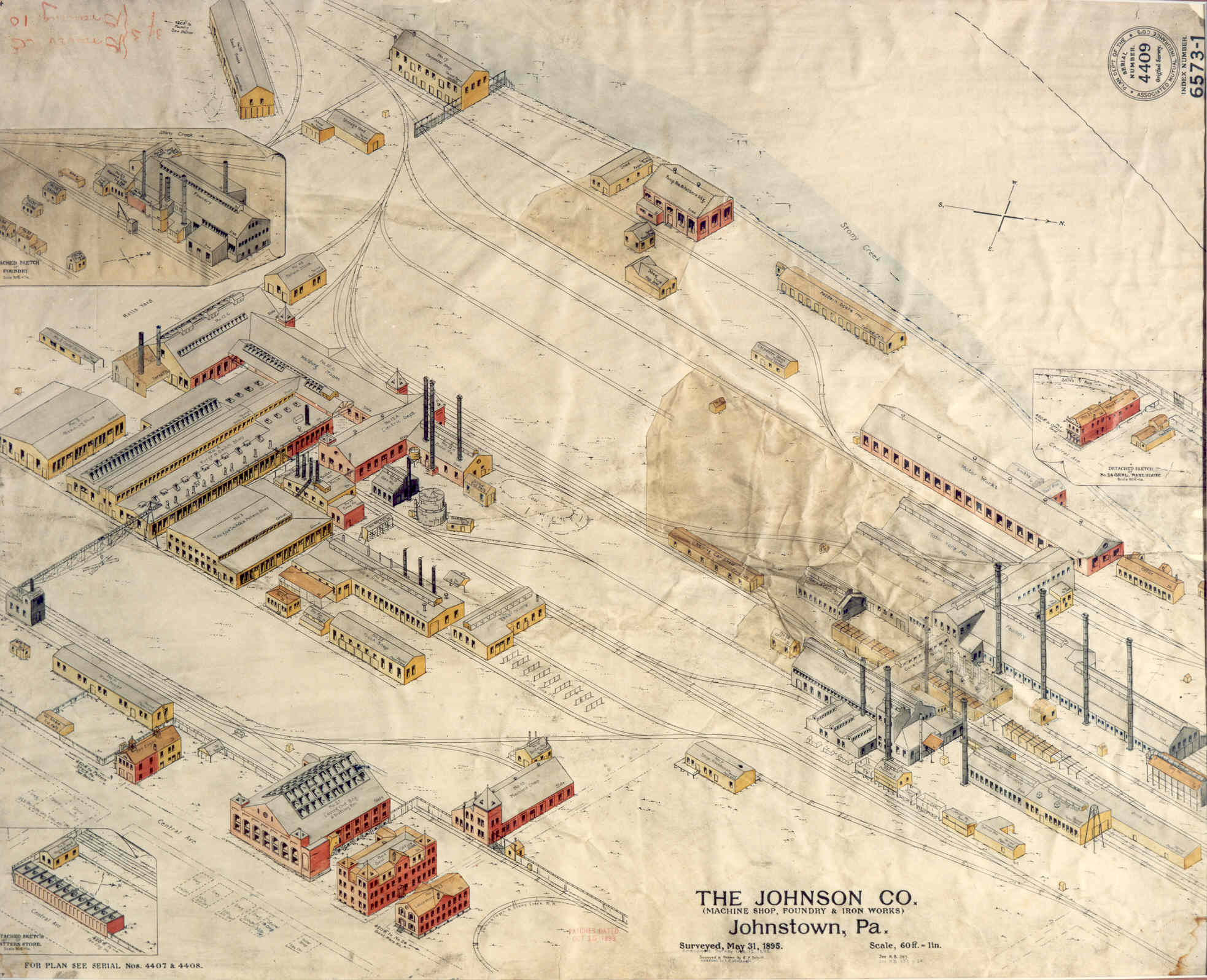
Insurance survey map (no. 4409, index no. 6573-1)of the Johnson
Company, Machine shop,
foundry
& iron works, Johnstown Pa., May 1895, after the rail mill had been relocated
to
Lorain, Ohio.
On the
right are the steel foundry and the Steel Motor Company. At the
top is the old
pump house
used to draw
water from the Stony Creek. In the top left insert is the
Iron Foundry; inn the
left-center
is the large switch
works (later the Upper Shops), lay out yard,
and travelling gantry crane.
In the
foreground is the
General Office complex, including the
Drawing Rooms and Lay Out Floor
Building
(with skylight roof),
the machine shop (with single
tower) and the laboratory building. Still
visible
is the loop of the Johnstown
and Stony Creek
Railroad. Along Central Avenue (bottom left) is the
Moxham Fire
Engine Company (JAHA).
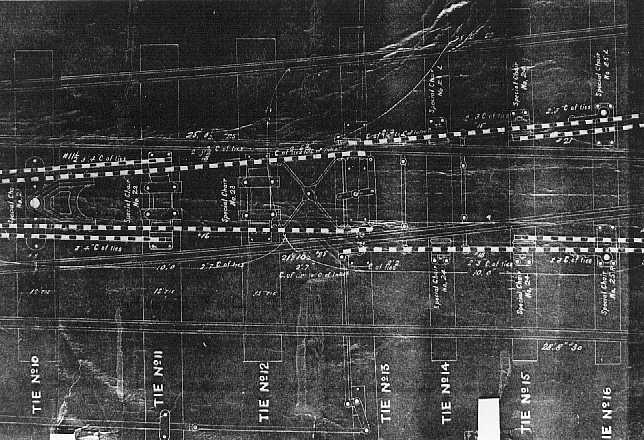
Original blueprints for the seven main switches built for the
Manitou and Pike's
Peak
Railway Company's rack (or cog) rail by the Johnson Company in 1889
and
delivered
for installation in early 1890 (JAHA).
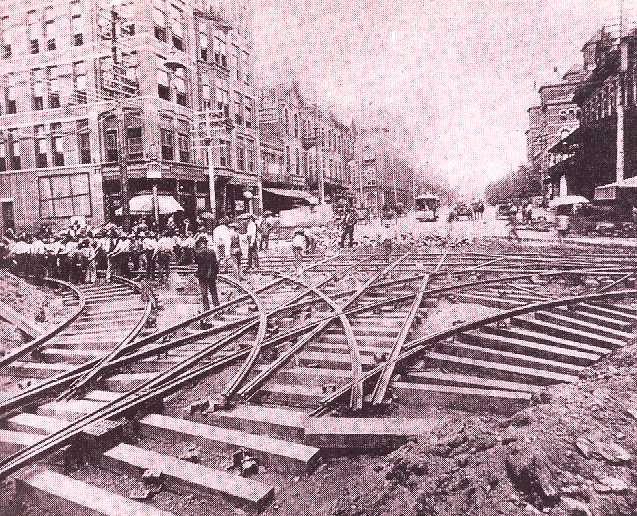
Johnson Company laying track in Atlanta Georgia in 1891. In 1891,
many of the smaller
horse-drawn
railway lines in Atlanta were merged into the Atlanta Consolidated Street
Railway Company and the
entire system electrified by Thomson-Houston. All of the rail
lines
were
re-railed, many with Johnson Company 45-pound girder rail) to accommodate
the heavier
cars. Five of those
lines converged at this
intersection of Broad and Marietta
Streets, where
this custom-designed Johnson
Company crossing
was installed.
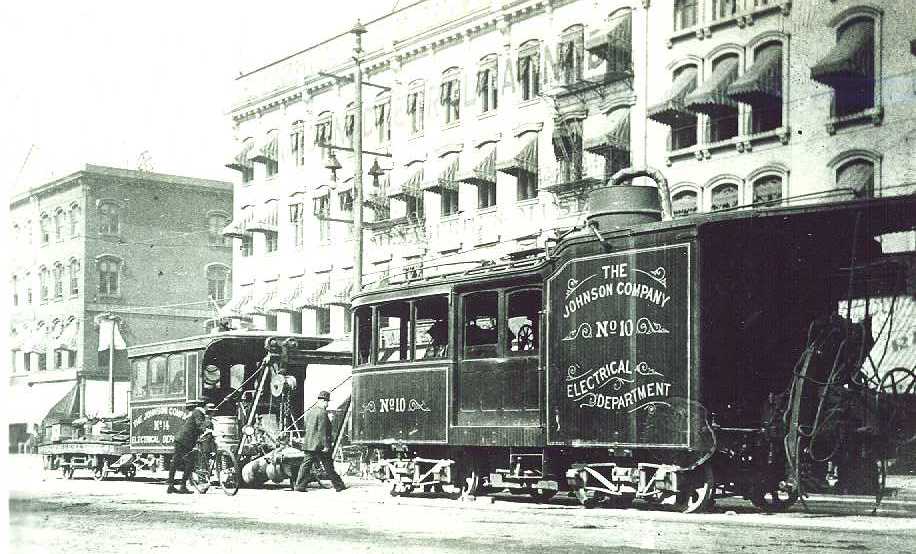
Installing Johnson girder rail at Woodward and Jefferson in
Detroit, Michigan for the
Detroit Citizens Street Railway in 1892 (Jack E. Schramm).
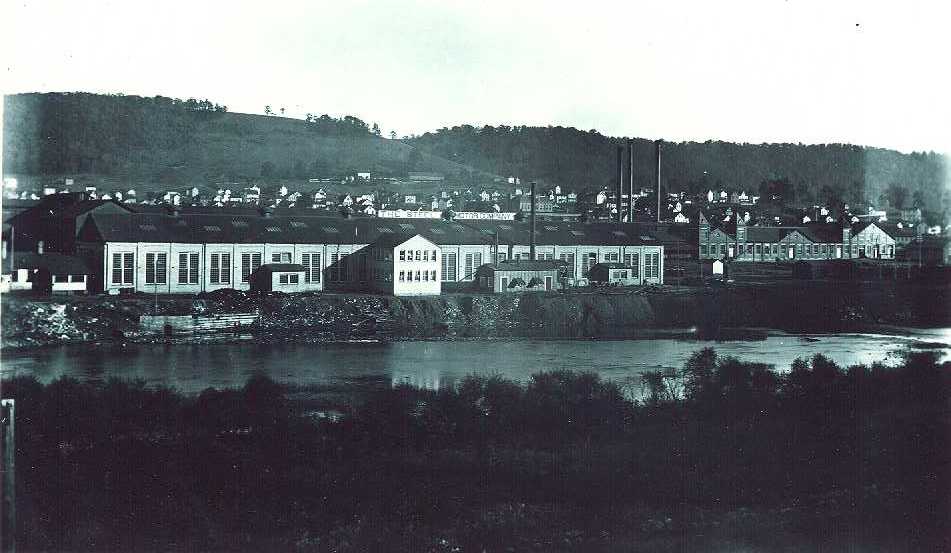
The Steel Motor Company, brought by Tom Johnson from Cleveland to
the Moxham mill in
March 1896
when the rail mill was relocated to Lorain, Ohio, circa 1897. The motor division
was housed in the mill's
original pattern shop along
the bank of the Stony Creek and was
subsequently sold to Westinghouse
Electric Manufacturing Company in Pittsburgh in 1902 ,
when the building converted back to a pattern shop.
On the left is the rear of the brick-faced
Electrical Department and Boiler
Room, built in 1889 (JAHA).
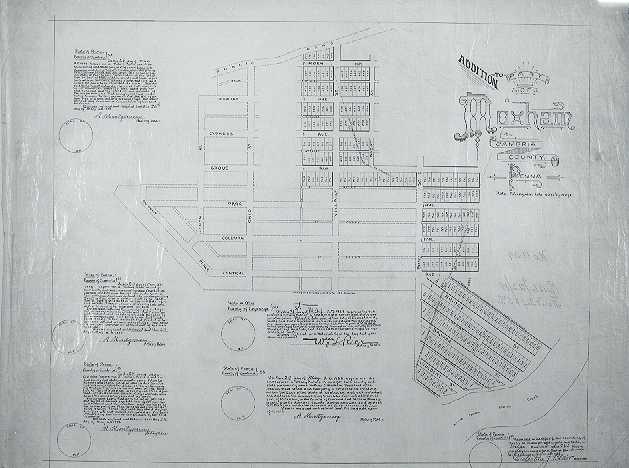
Original Plan of the Town of Moxham 1888. The plan was
commissioned by Tom L. Johnson and his
brother Albert,
who had purchased over 90 acres of the original Von Lunen farm next to the plant
site
for private residential
development, including a large city park (the Von Lunen Grove)
occupying
three
city blocks with a band shell
and a dining/dancing hall and the Moxham residence
which occupied
an entire city
block (20 lots)
immediately across Ohio Street from the Grove
(JAHA). Photo by Jet Lowe,
HABS/HAER,
March 14, 1989.
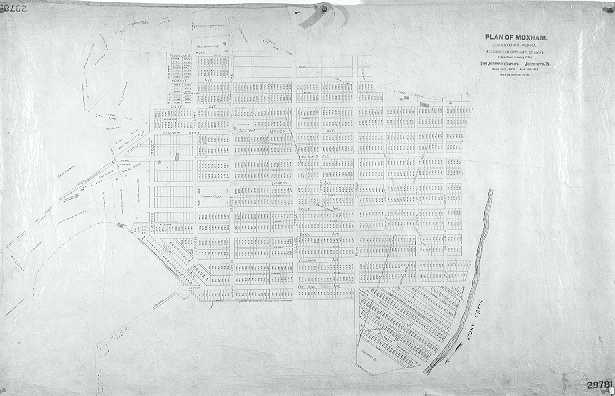
Revised plan of the Town of Moxham, drawing no. 10742, dated
February 1, 1892
(JAHA). Photo by Jet Lowe, HABS-HAER, March 14, 1989.
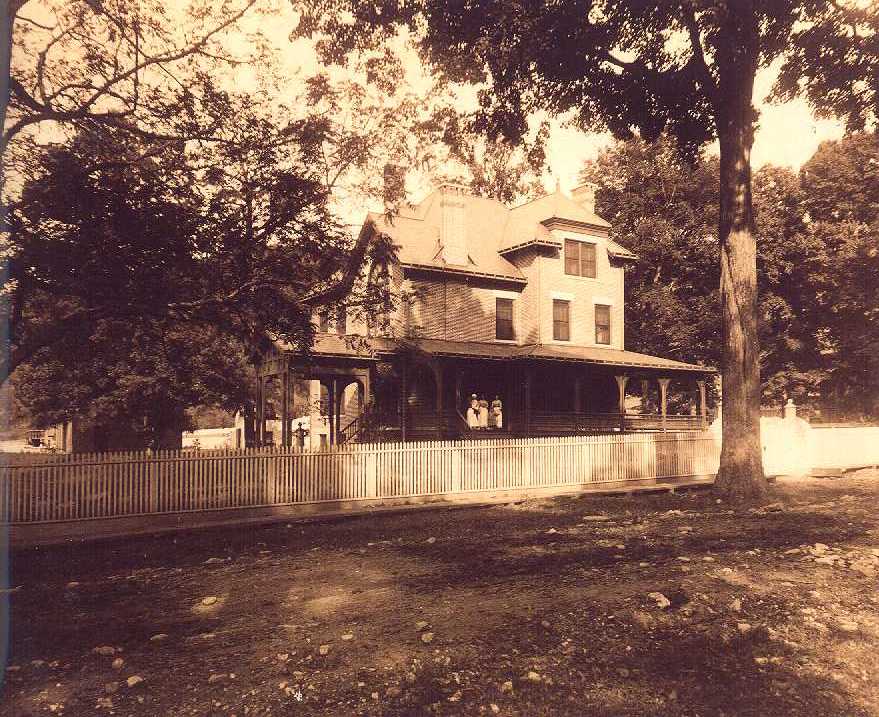
The Grove, home of Arthur J. Moxham, completed by architect B. F.
Horner in
March 1889
on a large wooded lot
adjacent to the
Dining/Dancing Hall and the band
shell of the Von Lunen
Grove. Photograph taken
in the summer of 1890;identifiable
on the porch are Helen Moxham (middle),
her sister Dullie, Moxham's
sister Evangeline,
and their
two
daughters Dulcenia (age 4) and Eva (age 2),
being held). When Moxham moved
his
family to
Lorain, Ohio in March 1895, the residence was occupied
by Coleman du Pont,
whom Moxham
had
brought from Louisville to be the new general manager
at the mill.
When du Pont
left
Johnstown in 1898, the house remained empty for three years
until
it was
purchased by
W. B. Dibert in May 1901. In 1916 the house was gutted by fire
and razed, and
the
property was subdivided into standard residential lots (Jim Moxham).

Johnson Company bond certificate, used as form of payment to
maintain liquidity in 1893. By law,
workers had
to be paid in cash rather than with script, so they were asked to convert their
cash wages into bind certificates
right at the pay window (Harold Jenkins).
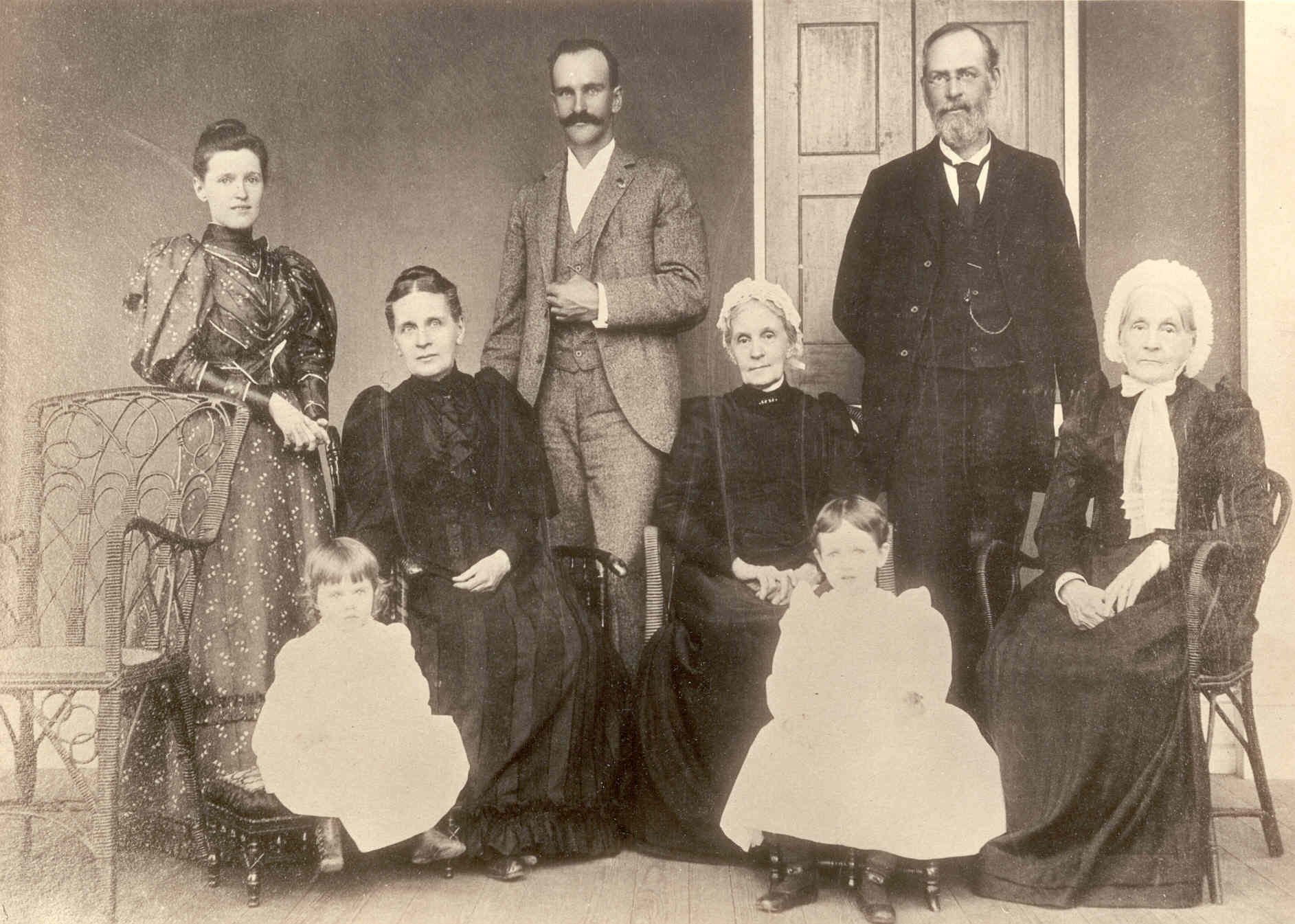
The family of Thomas Coleman du Pont (1863-1930) circa 1893,
showing (standing from left):
Alice du Pont
(1863-1937), wife of Thomas Coleman du Pont; Thomas Coleman du Pont; and
his
father A. Bidermann du Pont.
Seated: Alice Hounsfield du Pont, mother of Alice du Pont;
Augusta
Lamotte
Hounsfield, grandmother of
Alice du Pont and mother of Alice Hounsfield
du Pont; and
Margaretta Elizabeth
Lamotte du Pont, mother of Bidermann du Pont and
grandmother of
Thomas Coleman du Pont. Children
of Thomas Coleman du
Pont: Alice
Hounsfield
du Pont
at age 2 and Ellen Coleman du Pont
at age 4 (Hagley Museum).
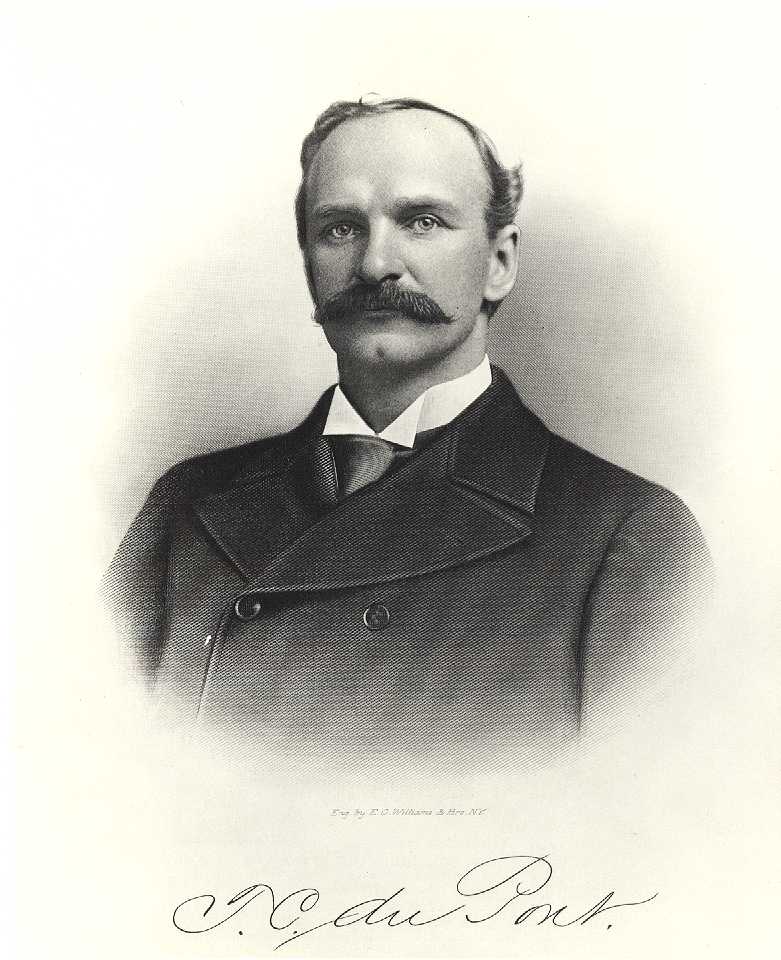
Thomas Coleman du Pont, circa 1896, general manager
of the Johnson Company Moxham works, 1894-1898.
Engraving by E. G. Williams & Bros, New York.
.jpg)
Edgar C. Moxham (1858-1913), younger brother of Arthur J.
Moxham
and a mining engineer. Edgar completed the ore
sampling and site
exploration
for the construction of the
steelworks of the Dominion Iron
and Steel
Company (DOMCO)
in Cape Breton, Nova Scotia in 1899.
He was
married to Bessie
Coleman, sister of Helen Coleman Moxham
(Murton
Carpenter).

Arthur J. and Helen Moxham and children Evangeline,
Dulcenia,
and Egbert at Kinsaak, their family home in Cape
Breton, Nova
Scotia, after the
death
of
Moxham's eldest son
Coleman Moxham in a
mill
accident at Dominion Iron and
Steel Company in Cape Breton
in 1901
(Jim Moxham).
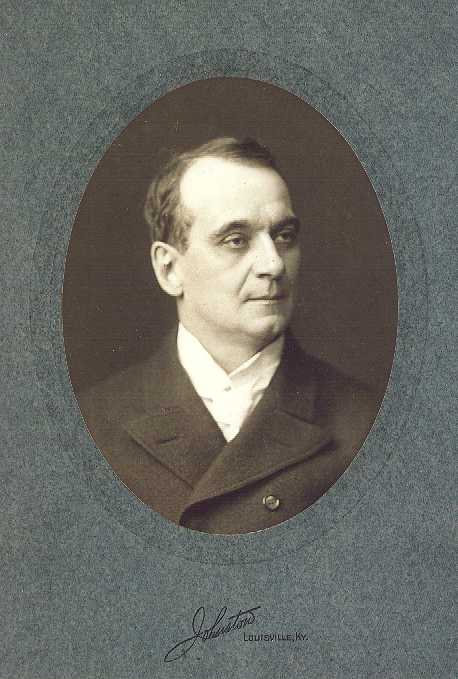
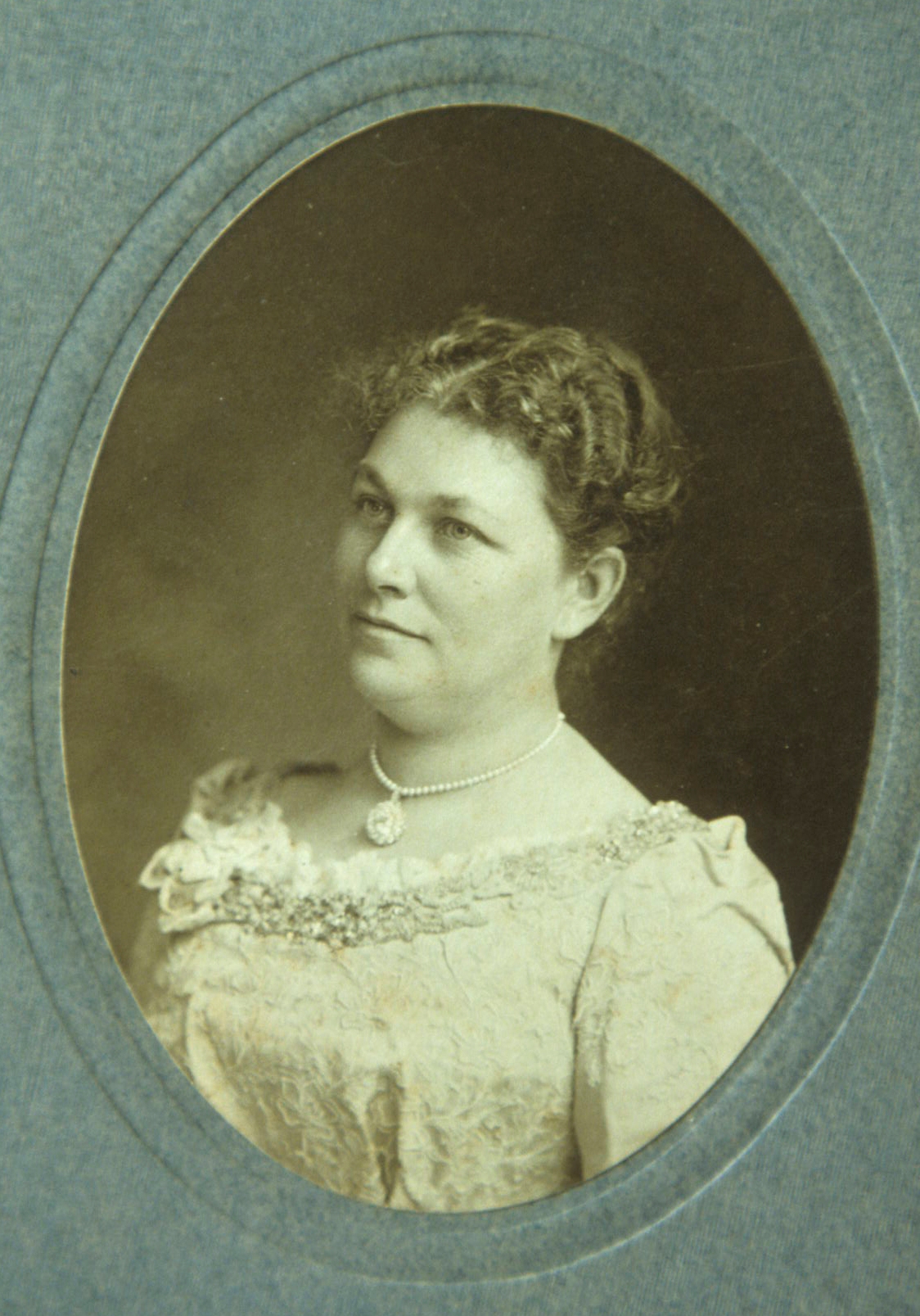
Arthur J. Moxham and Helen Coleman Moxham in 1903. Portraits by
William A. Johnston of Louisville (Jim Moxham).
%20Tramways%201901.jpg)
Laying out yard and gantry crane of Federal Steel's fabrication works
in Johnstown in 1901,
just prior to the 1902 merger into U. S. Steel Corporation (JAHA).
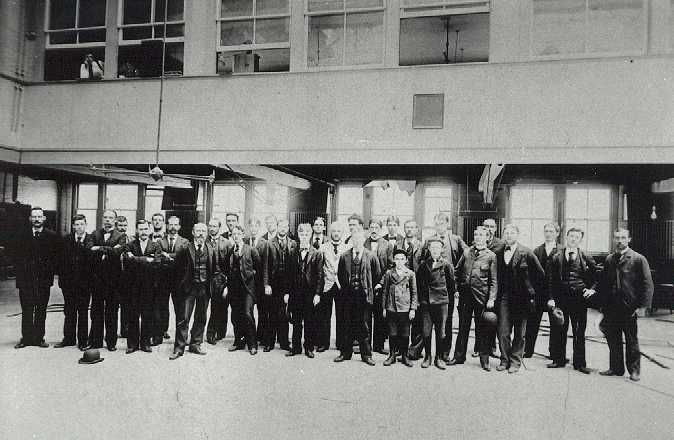
Engineering staff posing on the laying out floor in the
Engineering Building, circa 1900 (JAHA).
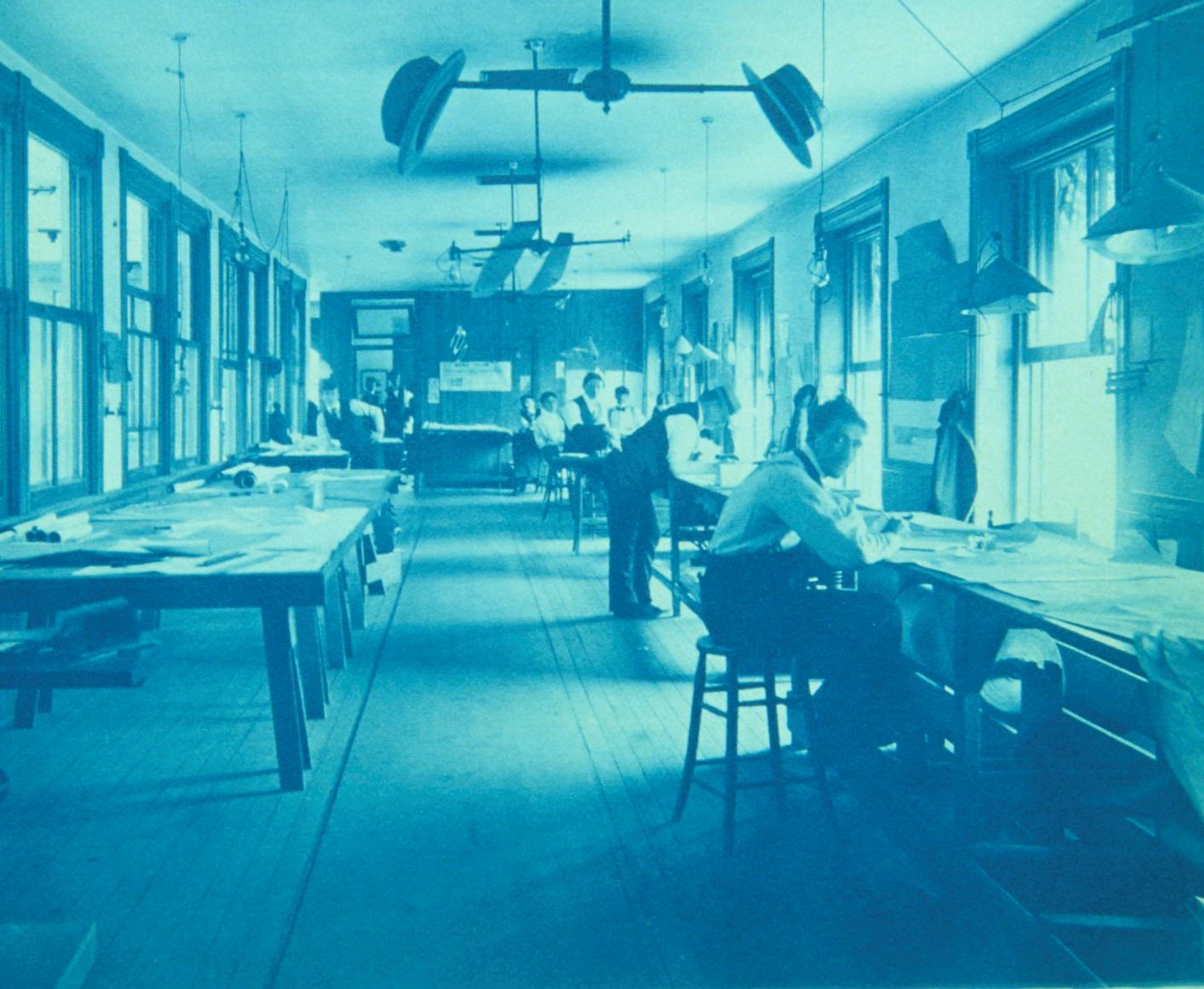
Johnstown Works of the Lorain Steel Company, second floor of the
north wing
Drawing Room
and Laying Out Floor Building, June 27, 1899 (JAHA).
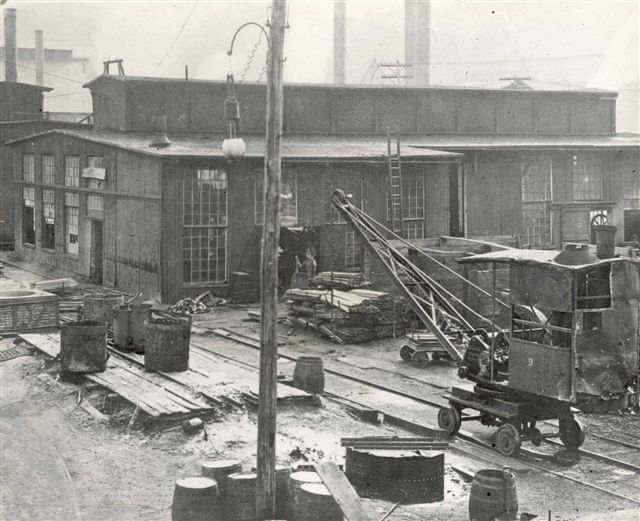
View of the old blacksmith shop of the Lorain Steel Company,
Johnstown Works,
circa
1901-1902.
Visible on the track is a small locomotive crane (JAHA).

Plant view of the Johnstown Works of the Lorain Steel Company
in 1911 (JAHA).
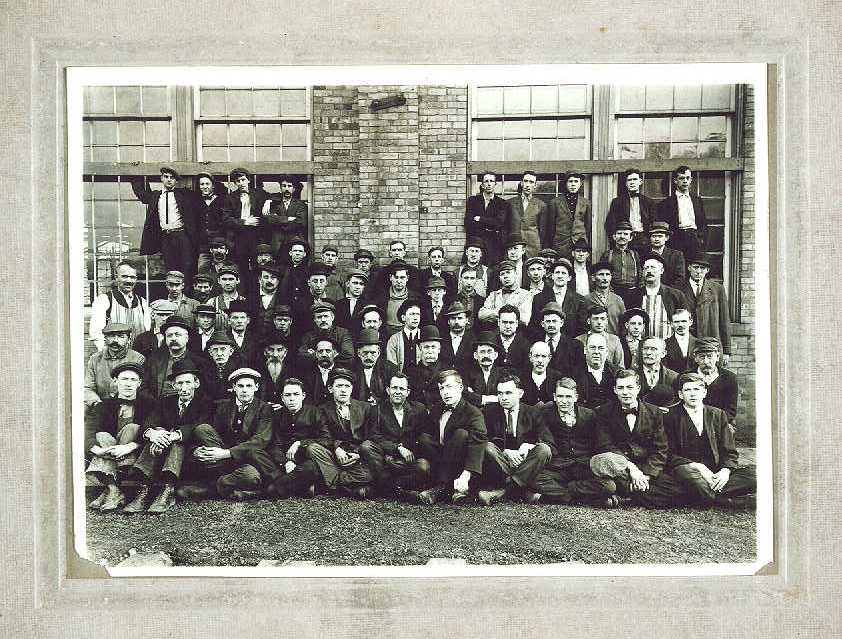
The Lorain Steel Company, Johnstown Works, Pattern Shop employees
circa 1912 (JAHA).
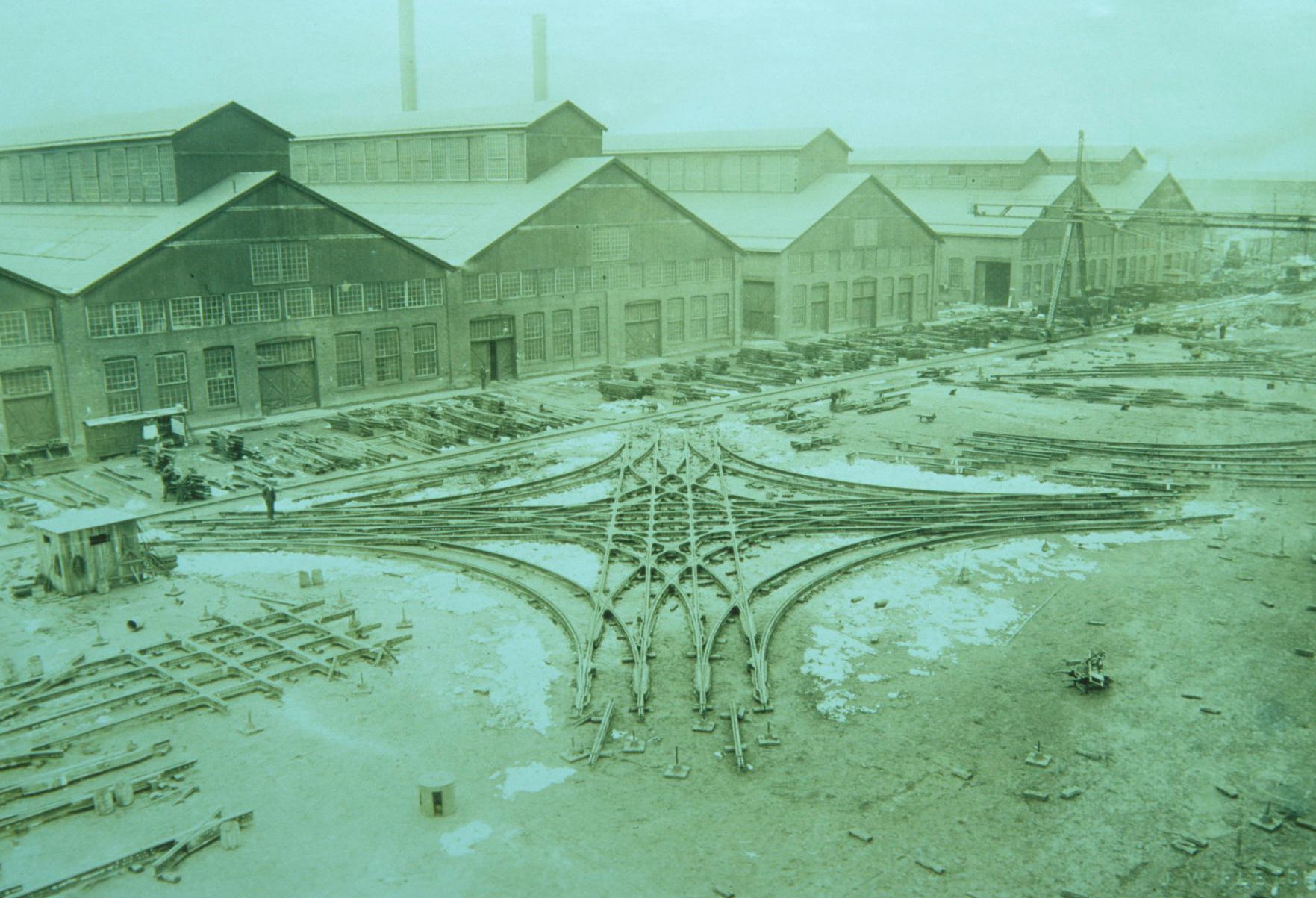
Laying out yard and Upper Shops of the Lorain Steel Company,
Johnstown Works, production
photograph of crossings for the Havana Railway Light and Power Company, March 2,
1921 (JAHA).
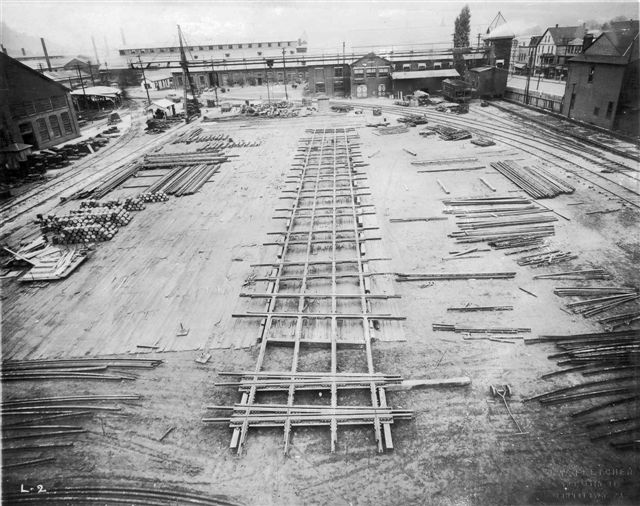
Laying out yard of the Lorain Steel Company, Johnstown Works,
production photograph of
26 steam railroad
crossings for the City of Detroit, June 1921 (JAHA).
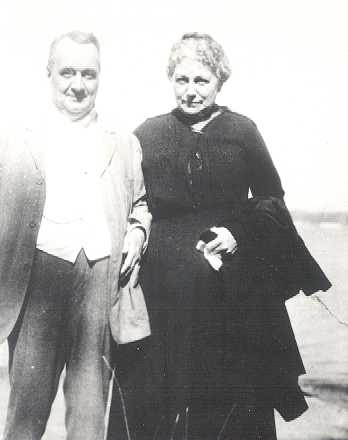
Arthur J. and Helen Moxham at Great Neck, Long Island,
circa 1924
(Jim Moxham).
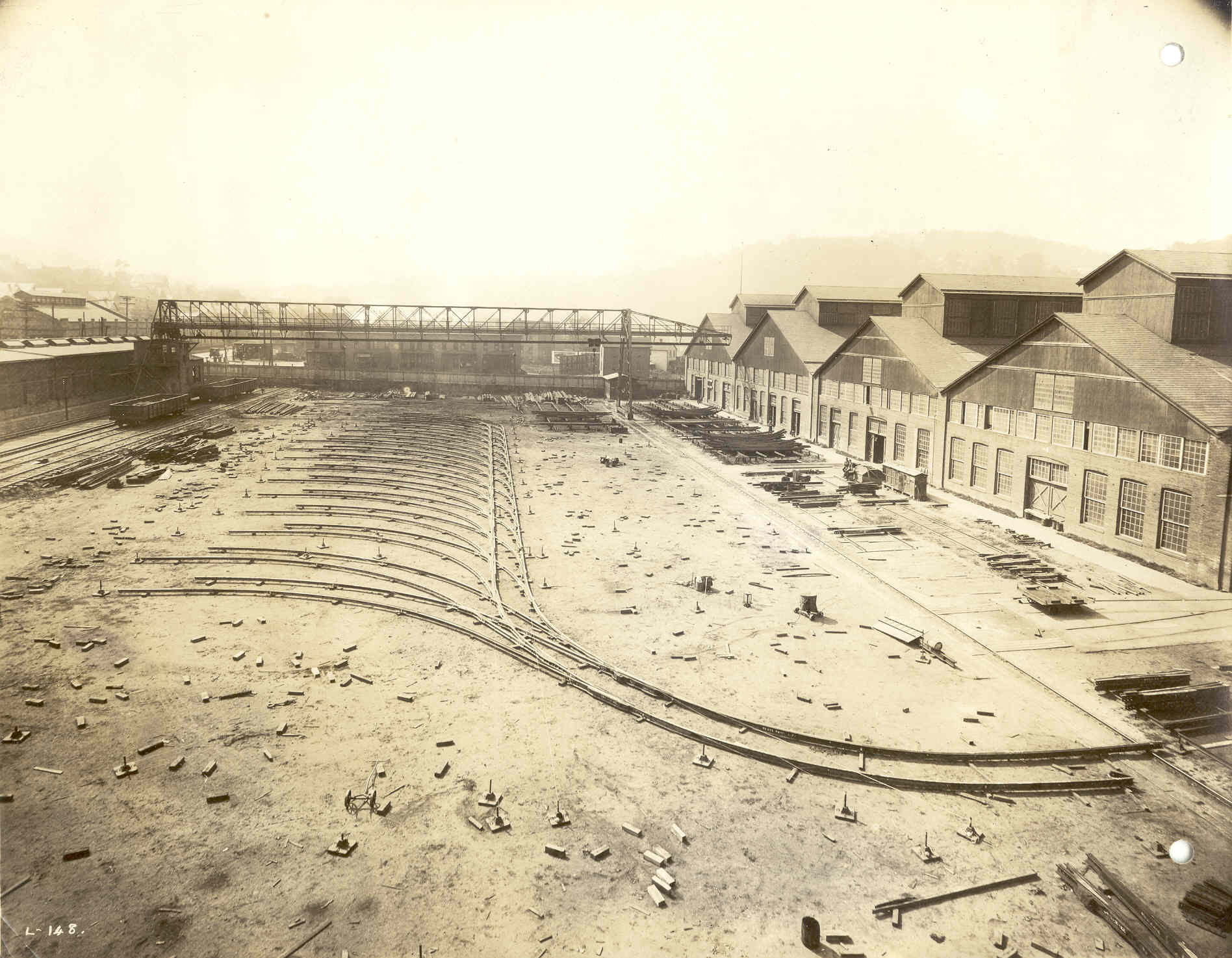
Laying out yard with gantry crane and the Upper Shops of the
Lorain Steel Company,
production
photograph of car barn curves for the east end of the Champaign Avenue
Car House
of the
Ottowa (Canada) Electric Railway Company, October 10, 1924 (JAHA).
%20intersection%201924.jpg)
Laying out yard of the Lorain Steel Company,
Johnstown, production photograph of
crossing
curves for the intersection of Newton and Portland Streets and Piccadilly
for
the Manchester
(England) Corporation Tramways, August 12, 1924. In the
background is the side
of the
Engineering
Building and to the far left the
Moxham Fire Engine Company with its
distinguishable bell tower (JAHA).
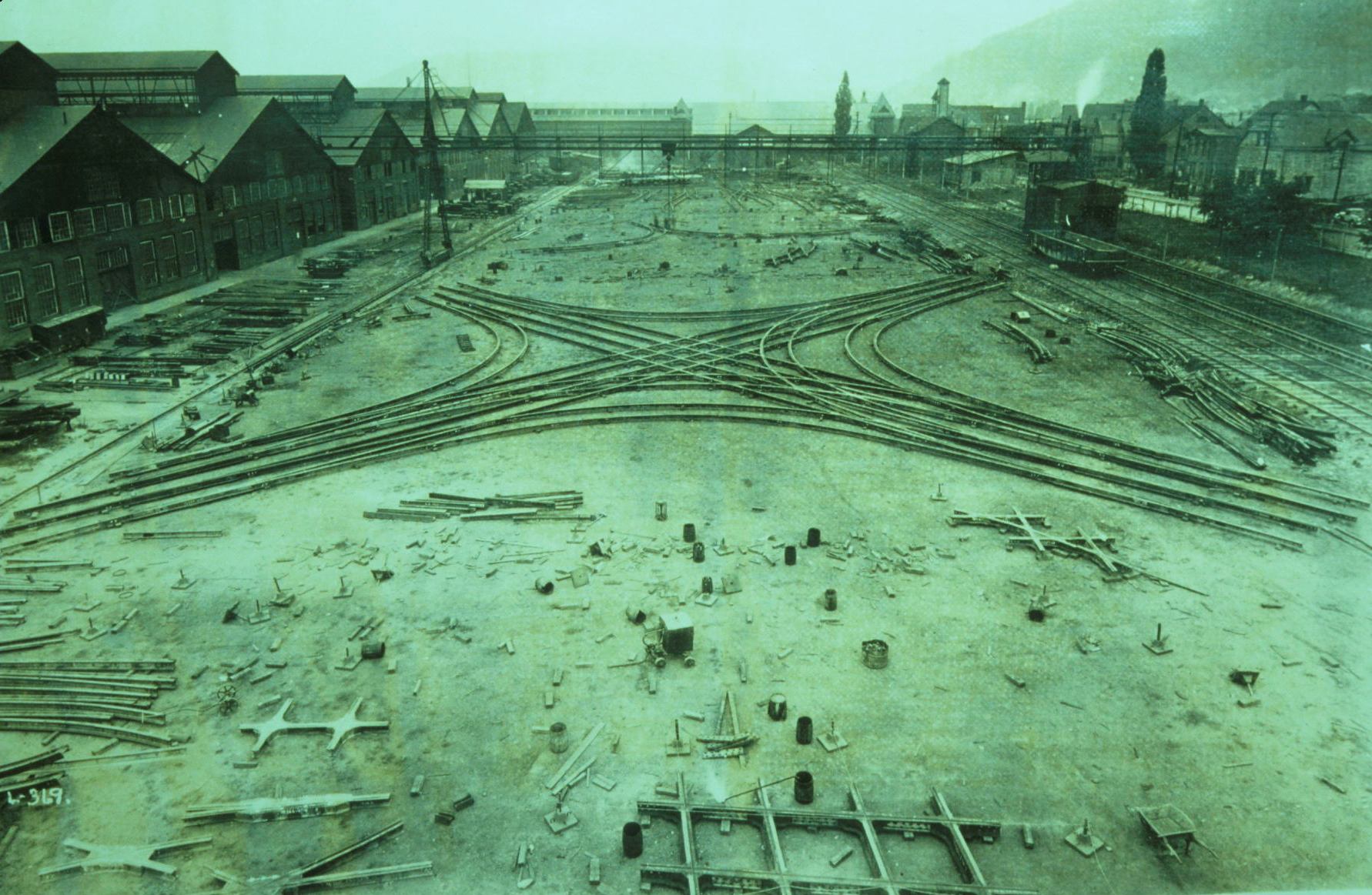
Laying out yard with gantry crane and the Upper Shops of the
Lorain Steel Company, production
photograph of
the Richmond and Bay Streets crossing for the Toronto Transportation Commission,
August 29, 1929 (JAHA).
------